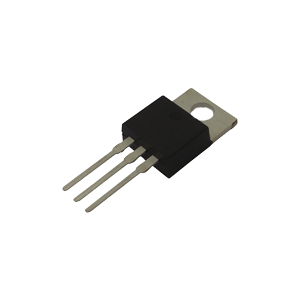Thyristor
 A special electrical switch that needs a small "push" (a brief current) to turn on and allow a large current to flow. Once turned on, it continues to conduct current even if the initial "push" disappears, and it only turns off when the current passing through it is interrupted (forced to zero).
A special electrical switch that needs a small "push" (a brief current) to turn on and allow a large current to flow. Once turned on, it continues to conduct current even if the initial "push" disappears, and it only turns off when the current passing through it is interrupted (forced to zero).
Definition:
A thyristor is a unidirectional semiconductor component with three terminals (anode, cathode, gate) that acts as an electronically controlled switch triggered by a brief current applied to its gate. Once triggered by this current, it conducts a large current from the anode to the cathode and remains conductive even after the gate current is removed—until the main current is interrupted or reversed.
Let’s break it down further:
Structure:
It consists of four layers of alternately doped P- and N-type semiconductor materials (PNPN), forming three junctions.
Terminals:
It has three main terminals:
- Anode (A): The positive current input.
- Cathode (K): The negative current output.
- Gate (G): The control electrode that initiates conduction.
Operation:
- Blocking state (OFF): As long as no current is applied to the gate (or if the anode-cathode voltage is too low), the thyristor does not conduct current. It behaves like an open switch.
- Triggering (turn-on): By applying a brief positive current to the gate relative to the cathode, the thyristor is "triggered." The internal junctions polarize in a way that allows a large current to flow from the anode to the cathode.
- Conducting state (ON): Once triggered, the thyristor remains conductive even if the gate current is removed. It behaves like a closed switch. Current continues to flow as long as a positive voltage is maintained between the anode and cathode and the current is not interrupted.
- Turn-off (extinction): To turn off the thyristor and return it to the blocking state, the anode-cathode current must be reduced below a certain value (called the holding current) or the anode-cathode voltage must be reversed.
Key Points to Remember:
- Unidirectional: Current can only flow in one direction, from the anode to the cathode.
- Current-controlled: Turn-on is initiated by a gate current.
- Self-sustaining: Once turned on, it stays on as long as the main current is not interrupted.
In summary, imagine a gate that stays closed until it receives a small impulse to open. Once open, it remains open even if the impulse disappears, and it only closes if the flow of people passing through it stops completely.
Thyristors are widely used in power control applications such as:
- Light dimmers
- Motor controls
- Power supplies
- AC rectification systems
See other components: